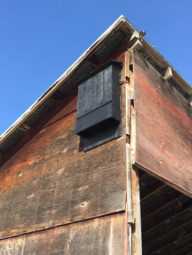
In Alberta, a multi-chambered box like this may house hundreds of little brown bats.
I’ve gone a bit batty recently, but I’m happy to say I’m not the only one. Bats seem to make the news almost every week and more people are aware of the perils they face. And bat boxes have become trendy. Who knew? You can order one from the Canadian Wildlife Federation, put together a DIY kit from Home Depot, or download plans to build your own from scratch.
These boxes offer bats a place to roost for the day – not hibernate. Bats prefer to roost in large, old deciduous trees that are broken or have holes, splits or cracks, but boxes offer shelter in areas where natural roosting habitat has been cut down.
I visited the Ann & Sandy Cross Conservation Area outside of Calgary on a day when students from the Calgary Quest School planned to build 5 bat boxes. The students arrived excited and happy to be out of school and the city for the day. Laura Griffin, Education Interpreter with the ASCCA, greeted them and asked, “How many of you have used power tools?”
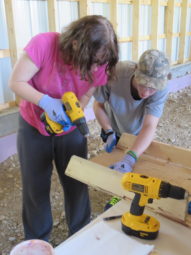
This is the fifth year that Quest students have partnered with the ASCCA
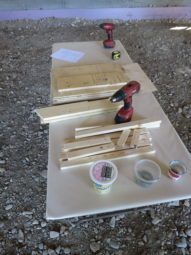 Almost all the hands went up and students were quick to name all the safety gear they’re going to need, and even some they won’t. They weren’t kidding – they’ve done this before.
Almost all the hands went up and students were quick to name all the safety gear they’re going to need, and even some they won’t. They weren’t kidding – they’ve done this before.
Their project was a multi-chambered design which will be mounted on the side of a building. In Alberta, it is important that a bat box have multiple chambers to allow bats to escape extreme daytime heat. Tight spaces are preferred. Bats like to huddle together in their roost, and hundreds of them may occupy one box. In Alberta, they will most likely be little brown bats or big brown bats.
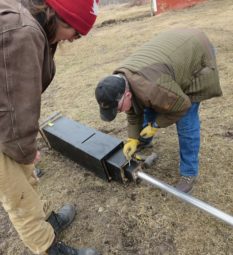
A rocket box can be mounted on a pole
A bat box is like a bird house, except the opening is at the bottom. It should be made of wood, which will provide good insulation and a rough surface for climbing. Seals should be caulked to prevent drafts and leaks, and the box should be painted with a dark non-toxic exterior stain to absorb the sun’s warmth.
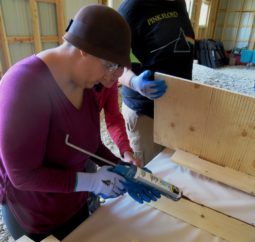
Alondra was very precise with the caulking gun
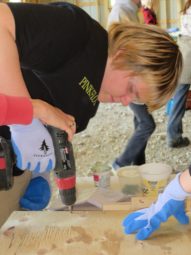
Julian liked using the drill best
The students were industrious in drilling, caulking and sanding with the guidance of Quest staff and HSBC volunteers. The students seemed to like the idea that they were building something to protect a tiny animal that only a few of them have ever seen.
A few of their bat boxes will be installed at the Ann & Sandy Cross Conservation Area. It’s important that they be located in full sun, with at least ten hours of direct sunlight, and unobstructed by trees so the bats have a clear flight path in and out. The box should be mounted at least 3 or 4 metres above the ground and far from tree branches, wires, or other places predators like owls and hawks might perch. A location near open water is preferred, which will offer the bats a place to drink and find insects. It’s interesting to note that bats avoid boxes attached to metal siding and areas with artificial lighting.
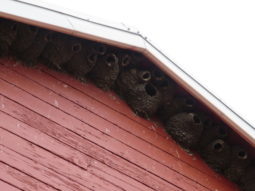
When selecting a site to install your bat box, be careful not to disturb other species already in residence
But there are no guarantees that bats will move in immediately. It may take years before one curious bat ventures inside, then invites 40 – 50 of her friends to join her. How do you know if a bat box is being used? Spread a light coloured sheet or tarp on the ground under the box and watch for guano. Bat droppings, or guano, are dark-coloured and the size and shape of rice.
A bat box might make a great family, classroom or community project – just be sure to get it installed early in the spring, before the bats emerge from hibernation!
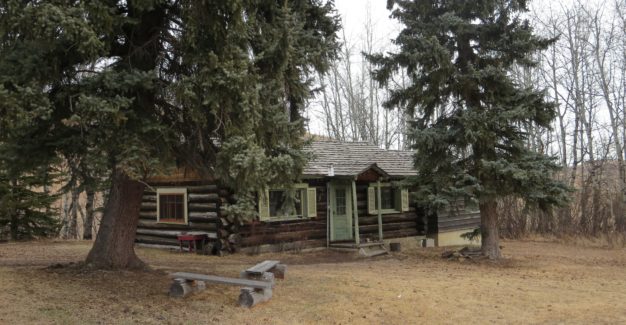
Thirty years ago, in 1987, Sandy Cross donated 2,000 acres of land southwest of Calgary for the preservation of prairie habitat and animals. Later, he donated another 2,800 acres
